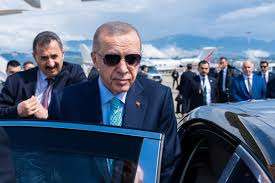Turkey’s defense industry: politics, propaganda and reality

Over the past decade Turkey’s government has promoted an ambitious narrative: that the country is becoming a global powerhouse in defense technology. From drones to tanks, helicopters to fighter jets, pro-government media outlets have portrayed Turkey as breaking the chains of dependence and entering a new era of self-sufficiency.
Yet behind the triumphant speeches, glossy advertisements and carefully staged unveiling ceremonies lies a sobering reality: Many of the projects celebrated as “indigenous and national” are still heavily dependent on foreign components, restricted by international sanctions or stuck in long delays. The gap between rhetoric and reality has turned the defense industry into one of President Recep Tayyip Erdoğan’s most potent political propaganda tools.
The myth of ‘national and indigenous’
In Turkey the slogan “yerli ve milli” (national and indigenous) has become the ruling party’s favorite branding for technological projects. But the slogan often conceals the fact that most of the showcased platforms are not fully domestic in design or capability.
Take the ATAK attack helicopter, introduced as a symbol of Turkish engineering. In reality the helicopter is based on the Italian AgustaWestland A129, with its critical engines imported from abroad. When export restrictions were imposed, production quickly faced bottlenecks.
The much-advertised TOGG car, hailed as Turkey’s “national automobile,” similarly depends on foreign design houses, imported parts and international supply chains.
The Altay main battle tank project, first announced in 2008, has suffered years of delays. The key problem? The engine and transmission system. Turkey sought German and South Korean solutions but ran into political obstacles and embargoes. More than a decade later, the tank is still not in serial production.
The boldest claim, however, has been the unveiling of KAAN, Turkey’s supposed fifth-generation fighter jet. Erdoğan presented it as a rival to the American F-35. Yet Foreign Minister Hakan Fidan recently admitted that the jet cannot even obtain its engine from the United States due to CAATSA sanctions. This admission shattered the myth of independence, revealing that Turkey’s most ambitious project remains reliant on American or European technology that Ankara cannot access
The drone dynasty: Bayraktar and Erdoğan
Perhaps the most visible symbol of Turkey’s defense industry is the Bayraktar drone, produced by Baykar, co-owned by Selçuk Bayraktar, President Erdoğan’s son-in-law. These drones have indeed been deployed in conflicts in Libya, Syria, Nagorno-Karabakh, and Ukraine, giving them a reputation as affordable battlefield game-changers.
But even here, the narrative of full independence is misleading. Bayraktar drones originally relied on Canadian and Western optical and engine systems, many of which became subject to embargoes after reports of their controversial use in active conflicts. Turkish suppliers scrambled to fill the gap, but the quality and availability of replacement parts remain contested.
What is more striking is how Erdoğan himself has become the chief salesman of these drones. During diplomatic tours in Africa, the Middle East and Central Asia, he personally pitches Bayraktar UAVs as part of political and economic packages. The drones have thus become a geopolitical bargaining chip, part weapon, part propaganda tool, part export commodity sustaining Turkey’s fragile economy.
Propaganda vs. capability
Why, then, does Erdoğan’s government insist on portraying these projects as world-beating achievements? The answer lies in domestic politics.
Turkey has been grappling with economic crises, democratic backsliding and growing international isolation. In such an environment defense industry spectacles serve as both distraction and rallying point for nationalist pride. State television regularly broadcasts Erdoğan posing in cockpits, parading alongside tanks or praising engineers as “the pride of the nation.”
This carefully crafted image creates the perception of strength and independence, even as the underlying projects remain incomplete or constrained by foreign dependence. In other words, the defense industry is less about genuine military capability and more about political survival.
A fragile future
Turkey’s defense industry has made real progress in some areas, particularly in drone technology and the development of certain missile systems. But claims that the country has achieved a global breakthrough are overstated. Critical systems, jet engines, tank power packs and advanced avionics still depend on foreign suppliers. Sanctions and political tensions further limit access.
Unless Turkey invests in long-term scientific research, independent industrial capacity and transparent partnerships, its projects will remain vulnerable to external shocks. For now, Erdoğan’s defense industry functions more as a theater of propaganda than as a guarantee of self-reliant military power.
In the end Turkey’s so-called “indigenous defense revolution” is less about technology than about politics: a stage-managed performance designed to project power abroad and consolidate authority at home.





